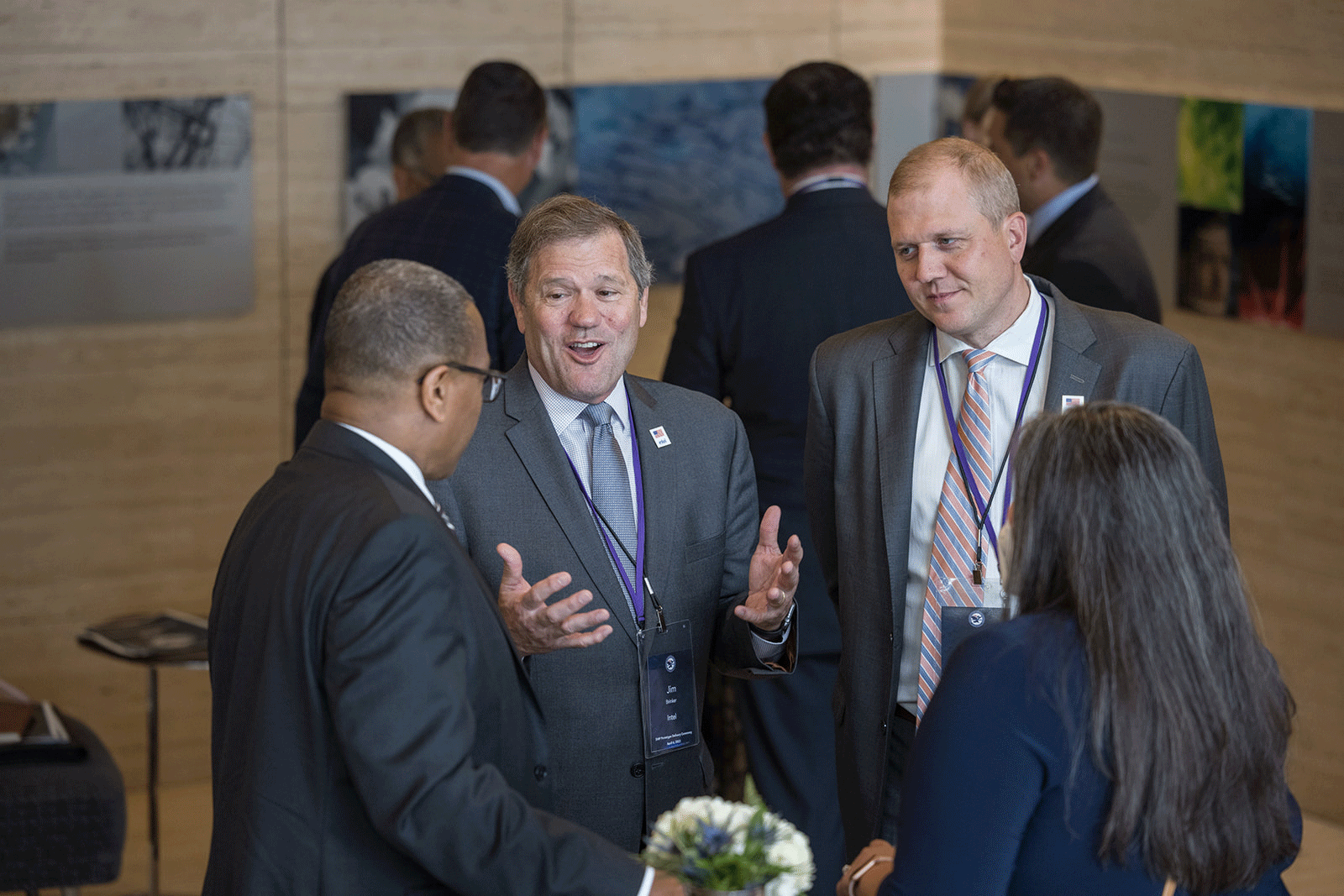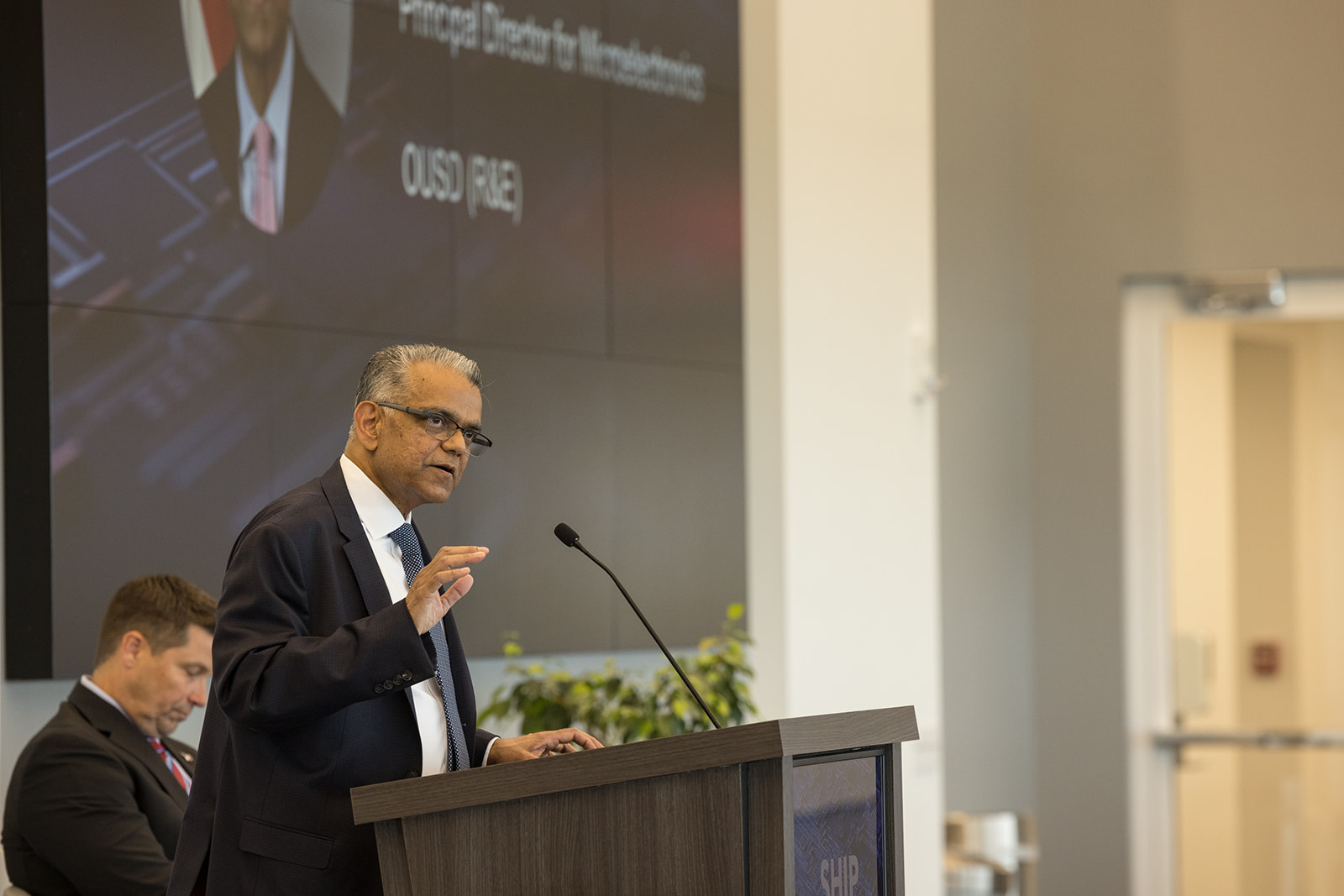2022 Year in Review
Connecting the Department of Defense with the nation’s leading technology innovators.
 At NSTXL, we are on a mission to transform Government innovation efforts with commercial best practices, tools, and expertise that compress timelines, decrease costs, and improve outcomes.
At NSTXL, we are on a mission to transform Government innovation efforts with commercial best practices, tools, and expertise that compress timelines, decrease costs, and improve outcomes.
Our humble beginnings were in a spare bedroom of my rented condo. Today, we have a growing team across 14 states and an engaged network of thousands of top innovators and experts.
What began as a network focused specifically on advanced energy technologies has now expanded to cover a wide array of technologies spanning the entire innovation ecosystem. We have supported projects that are redefining satellite communication in space, building a new generation of microelectronics foundries on U.S. soil, expanding United States Hypersonic capabilities, and engineering virtual training simulators to support our warfighters and first responders. And the potential for innovation doesn’t stop there.
In 2022, we released 44 opportunities across each program supported by 224 performers. We hosted more than 90 events, both in person and virtually, utilizing Human-Centric Design Thinking to support problem definition and requirement development.
And though we’ve made a tremendous impact, the journey is far from over. Much remains to be done. Recent world events illustrate just how quickly technological edge can be lost and how important eternal vigilance in technological excellence is to a more peaceful, prosperous world.
Today, our growing network of engaged innovators is larger and stronger than ever. We look forward to continuing to lean in, innovate, and lead from the front as we always have. It’s the only way we know how.
I am excited to see what we can accomplish together moving forward and proud to share with you our successes in 2022.
Tim Greeff
Founder & CEO, NSTXL

“AM research and application specific to TP threats is limited. This investment allows respondents to apply AM technology to TP threats with aim to demonstrate improvement over current TP techniques, with the end goal of delivering more secured Warfighter solutions.”
Dr. Kyle Werner
Global Deterrence and Defense Department Director
“AM research and application specific to TP threats is limited. This investment allows respondents to apply AM technology to TP threats with aim to demonstrate improvement over current TP techniques, with the end goal of delivering more secured Warfighter solutions.”
Dr. Kyle Werner
Global Deterrence and Defense Department Director
“The prototyping effort under SpEC allowed us to develop and demonstrate key aspects of our modular, scalable, extensible, and cyber-resilient applications for FORGE Mission Data Processing (MDP) that we build upon through this follow-on contract to meet the no-fail mission.”
David Simenc
Executive Director, SciTech, FORGE Project Lead
“Make no mistake, the U.S. is preparing to fight, and Indiana is taking a leadership role. Hypersonics research and development is happening right here in southern Indiana. More than 300 Hoosiers—engineers and scientists—are working non-stop at Naval Surface Warfare Center, Crane Division (NSWC Crane) to increase U.S. hypersonic capability.”
Mike Dodd
VP of Strategic Partnerships, NSTXL
“We are very honored to have been chosen by Space Systems Command to provide this important SDA capability for our nation. Given Northrop Grumman’s exceptional capabilities in radar development, digital engineering, and agile software delivery, we were able to leverage technology and expertise from across the company to craft a solution we felt best meets the mission need. We are pleased SSC saw the value of our approach, and our entire team is eager to begin working on this important program.”
Pablo Pezzimenti
Vice President of the Integrated Systems Business Unit, Northrop Grumman Corporation

NSTXL consortia members networking at SHIP Awareness Day in Washington D.C.
We Know Rapid Acquisition
NSTXL is the consortia manager for some of the most prominent contracting vehicles in the DoD. With more than $2B in obligated funds and award timelines 5x faster than traditional contracting, we are experts in rapid acquisition.
We support one of the largest networks of U.S. commercial innovators who have successfully accelerated the prototype development and manufacturing of mission-critical defense technologies.
Area of Impact
Microelectronics
Expanding our domestic microelectronics infrastructure is a top DoD priority. But, without a new approach, innovative microelectronics ideas are at risk of not transitioning from research laboratories to prototyping in fabs (lab-to-fab).

Dr. Dev Shenoy, Principal Director, Microelectronics, OUSD(R&E) and Director of the Defense Microelectronics Cross Functional Team (DMCFT) during the SHIP Awareness Day in D.C.
Space Symposium
Colorado Springs, COSpace Symposium
NSTXL hosted Col. Eric J. Felt, Commander of the Phillips Research Site and director of the Air Force Research Laboratory Space Vehicles Directorate at Kirtland Air Force Base, New Mexico, and Col. Joseph J. Roth, Director of Innovation and Prototyping for Space Systems Command, Kirtland Air Force Base, N.M., at the 37th Space Symposium in Colorado Springs. Col Felt and Roth spoke about the future of space advancement and current DoD needs for advancing space capabilities.
SOFIC Networking Nights
Tampa, FLSOFIC Networking Nights
During a two-day event, industry innovators came together to showcase their technology’s ability to support government projects in a one-of-a-kind collaboration event to support SOF capabilities. Nearly 100 industry members rotated through facilitated roundtable discussions where each participant shared capabilities with potential teaming partners.
“By showcasing its modernization roadmap to, and sharing prioritization insights with NSTXL members, PEO STRI continues to smooth the information bridge between Government and Industry,” stated Erin Kupcak, NSTXL’s Strategic Events Manager. “The result is an ecosystem of innovation and trust.”
SmallSat
Logan, UTSmallSat
Space Enterprise Consortium’s (SpEC) presence within the small satellite community was apparent during the 2022 SmallSat conference in Logan, Utah. With prominent SpEC member signs in view, about 30% of this year’s SmallSat exhibitors are members of SpEC. The impact SpEC has on the increasingly contested space domain was discernible during SmallSat’s keynote speech, technical sessions, and across each of their booths.
SpEC GMM
Los Angeles, CASpEC GMM
During the two-day event in Los Angeles, California, over 400 SpEC members were joined by government program leaders as they discussed future program initiatives and were able to collaborate on current opportunities.
Area of Impact
S²MARTS Reaches $1B
Since its inception in 2019, S²MARTS has effectively been able to move forward multiple contracts to support the Department of the Navy and America’s Warfighters. Within three years, S²MARTS has partnered with 38 active performers, and seen a total of 28 project awards obligating a total of over $1 Billion in funds. Every project S²MARTS manages has a direct impact on our military and national security. Projects vary based on technology and need, as some will support the desperate need to bolster America’s microelectronics industrial base and others advance our military’s hypersonic fleet through advanced manufacturing and other capabilities. Through every opportunity within the past three years, the S²MARTS team has exemplified its criticality to the advancement of U.S. national security efforts and is proud to support the DoD mission.
In 2022, we welcomed 300 new member organizations across 64 technology areas.
75% represent Small,
Non-Traditional organizations.
Top tech areas include 5G, Microelectronics, Hypersonics, and Space Awareness.
Here’s How We Do It
By combining a modern acquisition approach with the flexibility of Other Transaction Authorities (OTA) the government can acquire technology faster and more efficiently than ever.

Our Mission
NSTXL transforms Government innovation efforts with commercial best practices, tools, and expertise that compress timelines, decrease costs, and improve outcomes.


